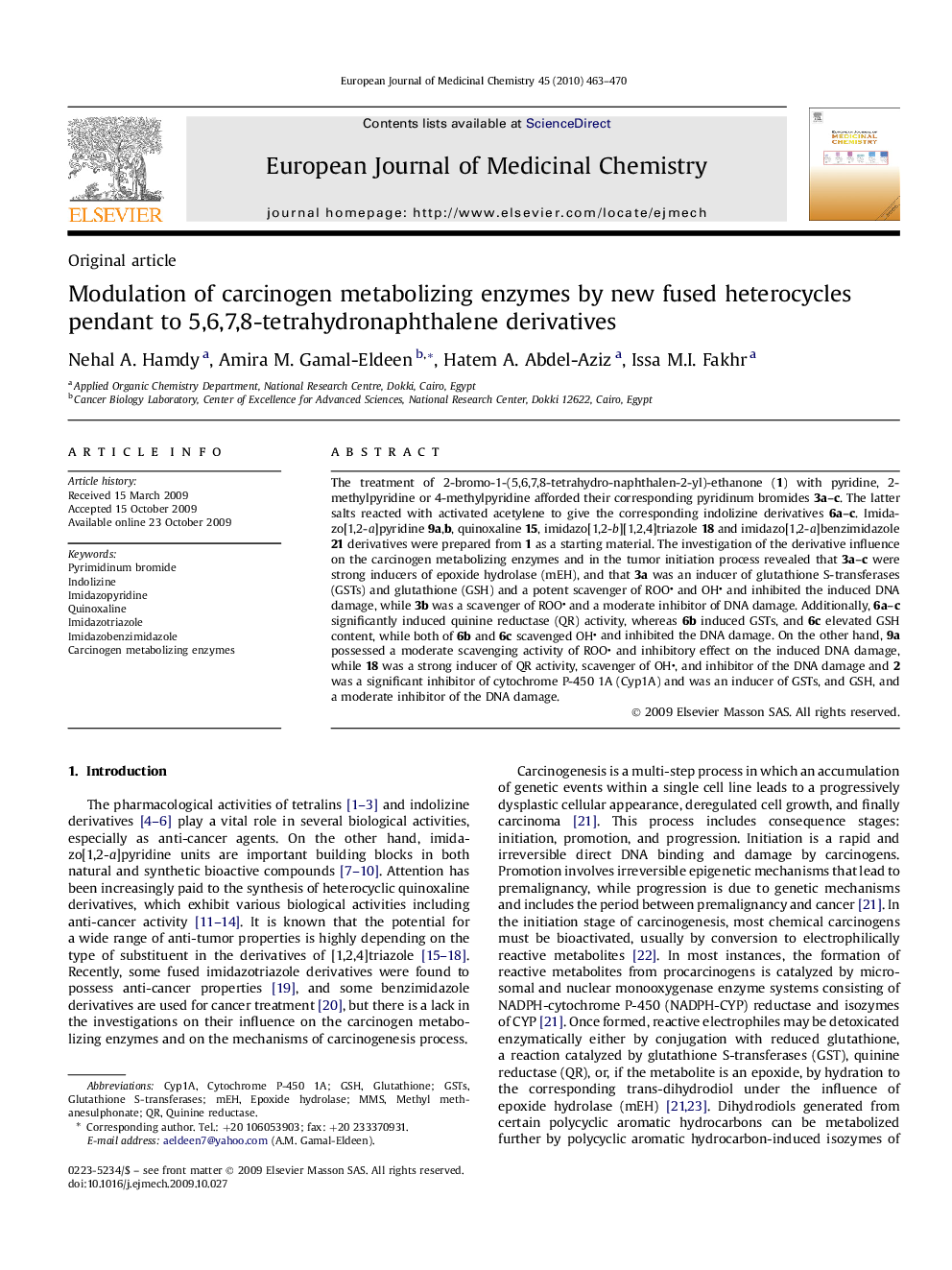| Article ID | Journal | Published Year | Pages | File Type |
|---|---|---|---|---|
| 1394973 | European Journal of Medicinal Chemistry | 2010 | 8 Pages |
The treatment of 2-bromo-1-(5,6,7,8-tetrahydro-naphthalen-2-yl)-ethanone (1) with pyridine, 2-methylpyridine or 4-methylpyridine afforded their corresponding pyridinum bromides 3a–c. The latter salts reacted with activated acetylene to give the corresponding indolizine derivatives 6a–c. Imidazo[1,2-a]pyridine 9a,b, quinoxaline 15, imidazo[1,2-b][1,2,4]triazole 18 and imidazo[1,2-a]benzimidazole 21 derivatives were prepared from 1 as a starting material. The investigation of the derivative influence on the carcinogen metabolizing enzymes and in the tumor initiation process revealed that 3a–c were strong inducers of epoxide hydrolase (mEH), and that 3a was an inducer of glutathione S-transferases (GSTs) and glutathione (GSH) and a potent scavenger of ROO and OH and inhibited the induced DNA damage, while 3b was a scavenger of ROO and a moderate inhibitor of DNA damage. Additionally, 6a–c significantly induced quinine reductase (QR) activity, whereas 6b induced GSTs, and 6c elevated GSH content, while both of 6b and 6c scavenged OH and inhibited the DNA damage. On the other hand, 9a possessed a moderate scavenging activity of ROO and inhibitory effect on the induced DNA damage, while 18 was a strong inducer of QR activity, scavenger of OH, and inhibitor of the DNA damage and 2 was a significant inhibitor of cytochrome P-450 1A (Cyp1A) and was an inducer of GSTs, and GSH, and a moderate inhibitor of the DNA damage.
Graphical abstractWe synthesized novel biheterocyclic derivatives containing inolizine, imidazopyridine, imidazobenzimidazole imidazotriazole, and quinoxaline derivatives from 2-bromoacetyl tetrahydronaphthalene.Figure optionsDownload full-size imageDownload as PowerPoint slide
